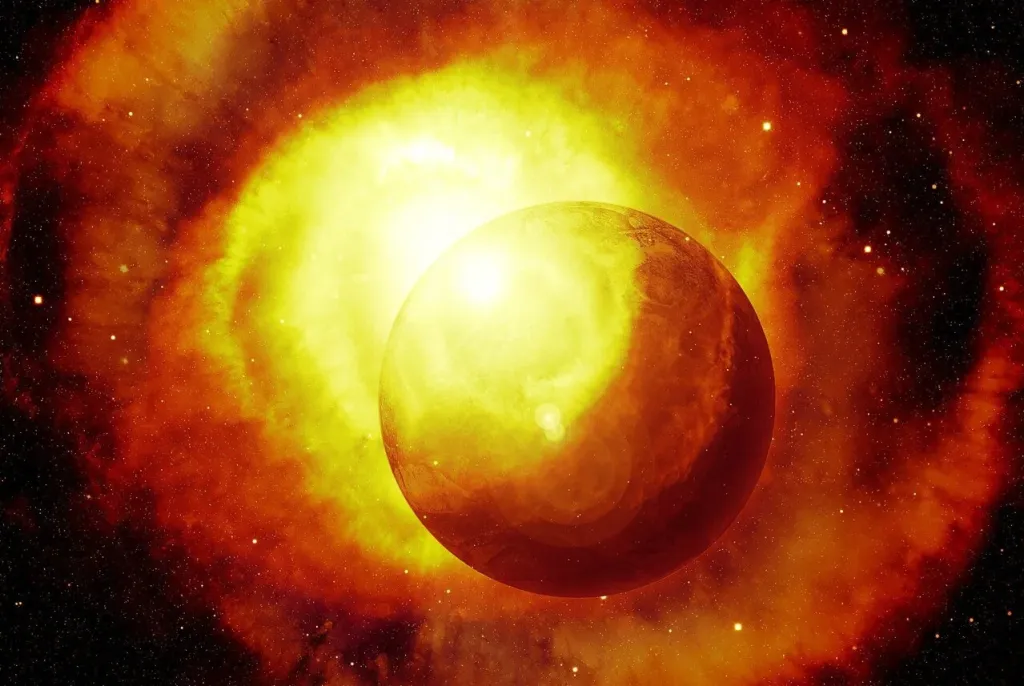Of the 5,500 exoplanets discovered in the universe, only a handful of them captivate the imagination with their extremely high density, exceeding the density of steel. The evolution of planets to such a state remains a mystery, but scientists have developed an interesting model of the specific transformation of exoplanets and simulated it on a computer.
The exoplanet TOI-1853b immediately caught the attention of scientists. It is slightly smaller than Neptune, but almost twice as dense as Earth. This enormous density cannot be explained by the traditional evolutionary methods of the exoplanets we have discovered and observed. Obviously, it formed in another way, possibly losing water and atmosphere in the course of its evolution, leaving an essentially rocky core for our observations.
A group of experts, led by physicist Luca Naponiello from the University of Rome Tor Vergata (Italy) and the University of Bristol (Great Britain), set out to understand how the exoplanet TOI-1853b reached such a state.
“This planet is amazing! We would normally expect planets with this amount of rock to turn into gas giants with a density similar to that of water, like Jupiter,” said physicist Jinyao Dou of the University of Bristol.. – TOI-1853b is the size of Neptune but has a higher density than steel. Our work shows that this could happen if there was an extremely energetic planetary collision during planet formation. As a result of these collisions, some of the light atmosphere and water disappeared, leaving behind a high-density planet enriched with rocks.”
The radius of TOI-1853b is 3.46 times that of the Earth, and the radius of Neptune is 3.88 times that of the Earth. This is where the similarities end. The exoplanet orbits its host star, an orange dwarf about 80% the size of the Sun, every 1.24 days. And if its radius isn’t a surprise, then its mass really puts us in a dead end: 73.2 times the mass of Earth. For example, Neptune’s mass is only 17.15 Earth masses.
Also read – NASA prepares to return OSIRIS-REx asteroid sample
According to the calculations of experts, the density of TOI-1853b with this size and mass is 9.7 g/cm3.3. Neptune’s average density is 1.64 g/cm3.3. Earth’s average density is 5.15 g/ cm3. The density of iron is 7.87 g/cm3.3 approximately the same density as steel. Because Neptune’s low density is due to its elongated atmosphere, TOI-1853b’s highest density suggests its almost complete absence alongside other less dense matter such as water.
A series of simulations has shown that the most likely explanation for exoplanet density is the high-speed collision of two large, still-forming exoplanets that have lost their atmospheres.
“Our contribution to the work was to model extreme giant collisions that could remove the light atmosphere and water (or ice) from the parent giant planet, creating extreme density,” explained physicist Phil Carter of the University of Bristol. . “We concluded that to form TOI-1853b as observed, the main planetary body would most likely have to be rich in water and undergo an extreme impact of more than 75 km/s.”
In addition, the exoplanet TOI-1853b belongs to a rare type of object in what is called the hot Neptune desert. These are Neptune-sized planets in very short orbits of their stars. Such planets are very few among the 5,500 or so exoplanets we know. Therefore, the operation of TOI-1853b has special value. This is actually the exoticism of a square.













